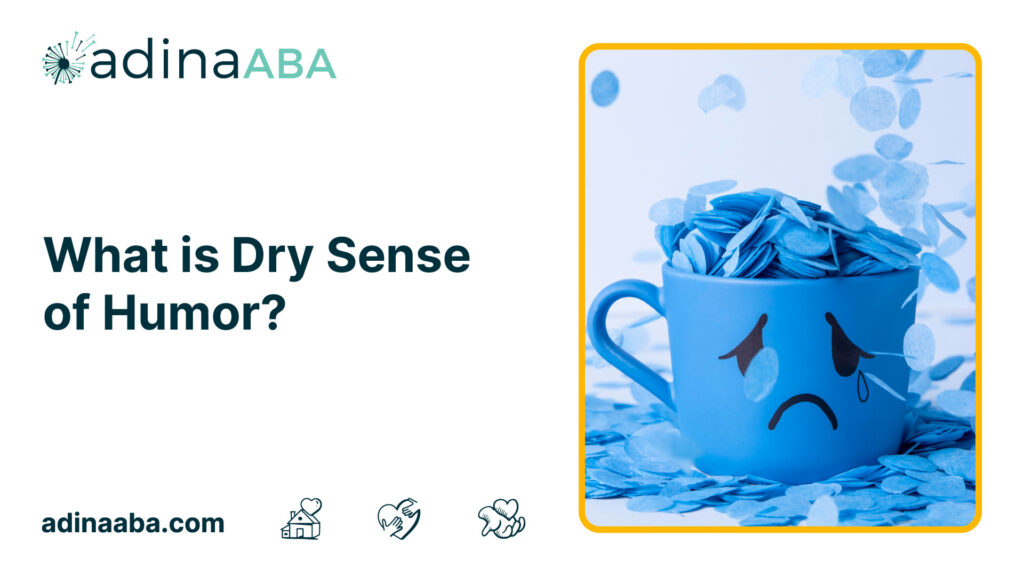
A dry sense of humor is a unique form of comedic expression that often goes unnoticed by those unfamiliar with its subtle nuances. It relies on understated wit, irony, and sarcasm to create laughter, leaving the audience to decipher the joke’s cleverness. This type of humor can be both perplexing and delightful, appealing to individuals who appreciate intellectual stimulation and a touch of the unexpected.
This article delves into the fascinating world of dry sense of humor, exploring its defining characteristics, common examples, and the reasons behind its enduring appeal. We’ll also examine the potential link between intelligence and this particular style of humor, shedding light on the complex interplay between wit and cognitive ability.
Defining Dry Humor
Dry humor is characterized by its understated and often ironic delivery. Unlike boisterous or slapstick comedy, dry sense of humor relies on subtle cues and wordplay to elicit laughter. It often involves making humorous observations about everyday situations with a straight face and a matter-of-fact tone. The humor arises from the unexpected juxtaposition of the mundane with a witty or sarcastic remark.
A key element of dry sense of humor is its reliance on irony. This literary device involves saying one thing while meaning the opposite, creating a humorous effect through the discrepancy between expectation and reality. Sarcasm, another hallmark of dry humor, employs irony to express contempt or mockery, often with a biting edge.
Characteristics of Dry Humor

Several distinct characteristics define dry sense of humor.
- Understated Delivery: Individuals who possess a dry sense of humor typically deliver their jokes with a calm and collected demeanor, avoiding exaggerated expressions or boisterous laughter. The humor stems from the contrast between the seriousness of the delivery and the absurdity of the content.
Irony and Sarcasm: As previously mentioned, irony and sarcasm are essential components of dry humor. These devices allow for subtle yet potent comedic effect by playing with expectations and subverting conventional interpretations.
Witty Observations: Dry sense of humor often involves making astute observations about everyday life, highlighting the absurdity or incongruity of seemingly ordinary situations.
- Deadpan Expression: A crucial element of dry humor is the use of a deadpan expression, maintaining a neutral facial expression even when delivering a humorous remark. This unexpected juxtaposition between the serious delivery and the witty content amplifies the comedic effect.
Subtlety and Nuance
One of the most defining characteristics of dry sense of humor is its subtlety. It often requires a certain level of intellectual engagement and attentiveness to fully appreciate the joke’s cleverness. Unlike more overt forms of humor, dry humor relies on nuanced wordplay, ironic situations, and understated delivery to create laughter.
Examples of Dry Humor
Let’s explore some classic examples of dry sense of humor:
- “I’m not sure what’s tighter, our jeans or our budget.”
- “I love deadlines. I especially like the whooshing sound they make as they fly by.”
- “My therapist told me to embrace my mistakes. I’m still holding on tight.”
These examples showcase the characteristic traits of dry humor: understated delivery, irony, and witty observations about everyday experiences.
Appeal of Dry Humor

The appeal of dry sense of humor lies in its unique ability to engage both intellect and emotions.
- Intellectual Stimulation: Dry humor often involves clever wordplay, unexpected twists, and subtle references that require a certain level of cognitive processing to fully appreciate. This intellectual challenge can be highly rewarding for individuals who enjoy mental stimulation and finding humor in the complexities of language and thought.
Subtlety and Sophistication: Unlike more boisterous forms of humor, dry sense of humor possesses a certain air of sophistication and refinement. Its understated nature appeals to those who appreciate wit and intelligence over loud or crass jokes.
Shared Understanding: A good dry sense of humor can create a sense of camaraderie among those who understand its nuances. It fosters a shared appreciation for subtle wit and intellectual playfulness, strengthening bonds between individuals who possess this particular comedic sensibility.
Intelligence and Dry Humor
There’s a long-standing debate about the potential link between intelligence and dry sense of humor. While no definitive causal relationship has been established, several studies suggest a correlation between these two traits.
- Cognitive Flexibility: Dry humor often requires individuals to think creatively, make unexpected connections, and shift perspectives quickly. This cognitive flexibility, a hallmark of intelligence, is essential for understanding and appreciating the subtle nuances of dry sense of humor.
- Theory of Mind: Understanding the intentions and motivations of others is crucial for grasping sarcasm and irony, key elements of dry humor. Individuals with a well-developed theory of mind, often associated with higher intelligence, are better equipped to decipher these complex social cues.
Conclusion
Dry sense of humor, with its understated wit and subtle charm, offers a unique form of comedic expression that appeals to those who appreciate intellectual stimulation and nuanced humor. Its reliance on irony, sarcasm, and deadpan delivery creates a distinct comedic experience that rewards attentive observation and cognitive engagement. While the precise relationship between intelligence and dry sense of humor remains an area of ongoing research, the potential link suggests that this particular style of humor may be a reflection of higher-order cognitive abilities.
